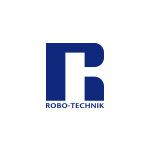TSMC(TSM)
Search documents
台积电调查前员工
半导体芯闻· 2025-12-11 10:11
如果您希望可以时常见面,欢迎标星收藏哦~ 这起案件是台湾检方为保护岛内全球顶尖芯片制造商的商业机密而采取的新举措之一。台湾生产了 全球大多数的先进计算机芯片,它们应用于从iPhone到汽车的几乎所有领域。但随着各国竞相扶 持本土芯片制造商,台湾当局正加大力度保护这一宝贵技术。 这是台湾政府首次援引2022年出台的一项法律,将芯片制造商的商业机密纳入地方安全保护范 畴。 12月2日,在另一起案件中,检方起诉了台积电供应商、日本设备制造商东京电子的台湾子公司, 指控其未能阻止前员工窃取台积电最先进芯片的相关细节。这是台湾首次依据安全法以窃取芯片商 业机密为由起诉企业。 检方表示,半导体技术"是台湾产业的生命线",窃取行为威胁台湾芯片企业的国际竞争力。 长期以来,台湾许多人将该岛在先进芯片制造领域的主导地位视为"硅盾",可以威慑声称对台湾拥 有主权的中国采取军事行动。 特朗普政府第一任期内的美中贸易战以及新冠疫情凸显了全球对台湾先进芯片的依赖程度。中国、 美国、韩国和日本已投入数十亿美元扶持本土芯片制造商,这些企业大多使用相同的供应商,并多 次挖角台湾工程师。 台湾法务部检察官刘怡君表示,这一切促使台湾立法者扩大了 ...
台积电再建一座4nm工厂?
半导体芯闻· 2025-12-11 10:11
Core Viewpoint - TSMC is considering advancing its chip production technology at its second factory in Japan to meet the demand for AI-related products, which may lead to construction delays and design changes [3][4]. Group 1: Factory Development - TSMC's second factory in Kumamoto, Japan, which began construction in late October, is now contemplating a shift to 4nm process technology, moving away from the initially planned 6nm and 7nm chips [3]. - The construction of the Kumamoto factory has reportedly been paused, with heavy machinery cleared from the site by early December [3]. - TSMC has informed suppliers that it will not add equipment to its existing factory in Kumamoto until at least 2026, as demand for 6nm and 7nm chips has decreased [4]. Group 2: Market Demand and Technology Shift - The demand for 6nm and 7nm chips has declined, impacting TSMC's production capacity utilization at its main facility in Taichung, Taiwan [4]. - TSMC has a history of adjusting its construction plans based on market demand, as seen with its facility in Kaohsiung, which shifted from mature processes to advanced 2nm technology [4]. - TSMC is also considering introducing advanced chip packaging technology in Japan, which is crucial for AI chip manufacturing [5]. Group 3: Partnerships and Support - TSMC's projects in Japan are supported by companies such as Sony Semiconductor Solutions, Denso, and Toyota [5].
TSM Seen as a “Quality Compounder” With Multi-Year AI Upside, Says Bernstein
Yahoo Finance· 2025-12-11 09:50
Taiwan Semiconductor Manufacturing Company Limited (NYSE:TSM) is one of the Trending AI Stocks on Wall Street. On December 8, Bernstein SocGen Group raised the price target on the stock to $330.00 from $290.00, while maintaining an “Outperform” rating. The firm sees TSM as a “quality compounder” driven by CoWoS ramp, AI demand, and pricing power across nodes. According to the firm, increased CoWoS (Chip on Wafer on Substrate) capacity will serve as a major driver for revenue growth toward Taiwan Semi’s 5 ...
罗博特科:公司暂未参与台积电OIP论坛

Zheng Quan Ri Bao· 2025-12-11 09:43
证券日报网讯 12月11日,罗博特科在互动平台回答投资者提问时表示,公司暂未参与台积电OIP论坛。 (文章来源:证券日报) ...
台积电明年CoWoS月产冲12.7万片,英伟达包揽过半,博通AMD紧随其后
Hua Er Jie Jian Wen· 2025-12-11 09:34
台积电正加速扩充先进封装产能以应对人工智能芯片需求的爆发式增长。 12月11日,据中国台湾媒体报道,半导体设备业者透露,台积电与日月光集团、Amkor、联电等非台积 阵营双双加速扩充CoWoS产能,2026年底台积电月产能将达12.7万片,而非台积阵营产能也从原预期的 2.6万片激增至4万片,调升幅度超过5成。 在客户份额分布上,英伟达继续主导市场,包下台积电CoWoS过半产能,全年预订量达80万至85万 片。紧随其后的博通2026年约取得逾24万片产能,主要供应Meta与谷歌TPU等客户。AMD位居第三, 而联发科也正式进入ASIC赛局,预订近2万片产能。 这一产能扩张计划与摩根士丹利11月的预测基本吻合。据追风交易台消息,该行当时预计台积电 CoWoS月产能将达12万至13万片,较此前估计的10万片大幅上调超过20%。此举旨在匹配新增的3nm前 端晶圆产能,以满足AI芯片的巨大需求。 值得注意的是,华尔街见闻此前文章称,在英伟达CEO黄仁勋访台寻求下一代"Rubin"平台产能后,台 积电决定增加每月2万片的3nm前端晶圆产能,进而带动后端先进封装产能同步提升。 GPU与ASIC需求同步爆发 台积电与非台积 ...
美股异动丨台积电盘前跌超2%,11月销售额环比下滑6.5%
Ge Long Hui· 2025-12-11 09:28
此外,报告指出,台积电目前的先进封装产能已经全部预定完毕,其中英伟达占到超一半的份额。而台 积电先进封装产能紧张,无法满足行业不断增长的需求,决定将部分订单外包,由日月光和矽品精密等 企业负责分担。(格隆汇) 台积电(TSM.US)盘前跌超2%,报303.12美元。消息面上,台积电公布,11月销售额3436.1亿元新台 币,环比下滑6.5%,同比增长24.5%,仍创历年同期新高;1-11月累计销售额3.47万亿元新台币,同比 增长32.8%。 ...
英伟达狂扫台积电80万片晶圆!2026年AI芯片大战一触即发
Sou Hu Cai Jing· 2025-12-11 08:38
据台媒DigiTimes于2025年12月10日发布的一份报告显示,主要供应商台积电的先进封装产能已全部预定完毕,其中英伟达占到了超一半的份额。该报告指 出,英伟达已为2026年预订了80万至85万片晶圆,与博通和AMD等竞争对手相比,这是一个相当大的份额。 报告称,英伟达此次大规模锁定产能,主要是为了满足Blackwell Ultra芯片持续增长的量产需求,并为下一代Rubin架构的推出做准备。值得注意的是,目前 的订单量尚未包含中国市场对H200 AI芯片的潜在需求。若将这一因素考虑在内,英伟达对产能的需求可能会进一步攀升。 为应对激增的订单需求,台积电正积极扩大其先进封装设施。公司计划在AP7工厂建设八座晶圆厂,同时,台积电也正在美国亚利桑那州引入两座新的封装 工厂,预计将于2028年开始大规模生产。 声明:市场有风险,投资需谨慎。本文为AI基于第三方数据生成,仅供参考,不构成个人投资建议。 来源:市场资讯 与此同时,台积电已因自身产能有限,决定将CoWoS先进封装中的部分环节外包,由中国台湾地区的日月光集团和矽品精密等企业分担。尽管如此,这也 让一些企业开始思考替代选择,英特尔的EMIB技术由此异军突 ...
音频 | 格隆汇12.11盘前要点—港A美股你需要关注的大事都在这
Ge Long Hui A P P· 2025-12-11 07:04
9、公告精选︱宁沪高速:拟投资90亿元建设宁扬长江大桥南接线项目;福晶科技:本次股票异常波动 期间,实际控制人物构所减持104.29万股; 10、A股投资避雷针︱信邦制药:涉嫌单位行贿,检察机关已经收到监察委员会移送起诉的材料。 1、美联储FOMC声明及鲍威尔发布会:如期降息25个基点,目前处于中性水平区间的上端; 2、美股三大指数集体收涨,道指涨超1%,中概指数涨0.65%; 3、白银价格续创历史新高; 4、美联储明年1月降息25个基点的概率为22.1%; 5、特朗普批评美联储降息力度不够; 6、哈塞特:特朗普将在未来一两周内敲定美联储主席人选; 7、华尔街认为原油抛售远未结束 明年将因供应过剩而继续下跌; 8、印尼:12月23日起将对黄金产品的出口征收关税; 9、美国拟强制免签旅客提交五年社媒记录; 10、美国在委内瑞拉海岸扣押一艘油轮 委石油出口或变得更难; 11、Meta全力转向闭源模型 新模型Avocado或于明年春季推出; 12、美光NAND报价单月暴涨近50% 模组厂:明年Q2后缺货将成为全面现象; 13、日本拟大幅降低超级富豪征税门槛 预计增收3000亿日元; 1、美银:人民币料于2026年升 ...
The Smartest Tech Stock to Buy With $1,000 Right Now
The Motley Fool· 2025-12-11 06:21
TSMC could be one of the smartest long-term investments you make today.Shares of Taiwan Semiconductor Manufacturing Co. (TSM +2.22%) are up by roughly 54% in 2025 through Dec. 9. The company is experiencing exceptional demand for its cutting-edge process nodes and CoWoS (chip on wafer on substrate) packaging technology for manufacturing advanced chips for data centers, smartphones, and automobiles.If you've paid off high-interest debt and have $1,000 not required for bills or contingencies or anything in th ...
马斯克:若重新来过,不会再领导美国“政府效率部”|首席资讯日报
首席商业评论· 2025-12-11 06:12
Group 1 - Musk stated that if he could start over, he would not choose to lead the U.S. "Department of Government Efficiency" (DOGE), as it fell short of the expected $2 trillion in taxpayer savings, and Tesla's stock was negatively impacted by DOGE [2] - JD.com is involved in a strategic real estate investment in Hong Kong, acquiring a 50% stake in a 27-story office building for approximately HKD 3.473 billion through its controlled investment institution [3] - Coupang's CEO resigned due to a data breach incident, with the company's COO stepping in as the interim leader [4] Group 2 - Meituan has hired Pan Xin, former head of ByteDance's visual model AI platform, to enhance its AI capabilities, indicating increased competition in the AI sector [5][6] - The National Bureau of Statistics reported a 2.2% year-on-year decline in industrial producer prices in November 2025, with a 2.7% average decrease for the year-to-date [6] - Wanma Technology is collaborating with several leading robotics companies based on its intelligent robot system, although this segment currently represents a small portion of its overall revenue [7] Group 3 - OpenAI, Anthropic, and Block have established the AI Agents Foundation to support the development of open and interoperable AI systems, backed by major tech companies [8] - Google launched the Google AI Plus service in India, priced at INR 399 per month, with a promotional rate for new users [9] - TSMC reported a revenue of NT$343.614 billion for November, a 6.5% decrease from the previous month but a 24.5% increase year-on-year [10] Group 4 - Moutai's price for its 53-degree 500ml bottle is stabilizing around RMB 1,520, while the price for the 1L bottle remains at RMB 2,900 [11] - Xiaomi is expanding into the AI education sector, actively recruiting for various related positions, indicating a strategic move to enhance its ecosystem [12] - There is a competitive bidding situation for sponsorship of the 2026 Spring Festival Gala, with companies like Zhiyuan and Yushu reportedly vying for the title, although claims of high bids have been denied [13]






